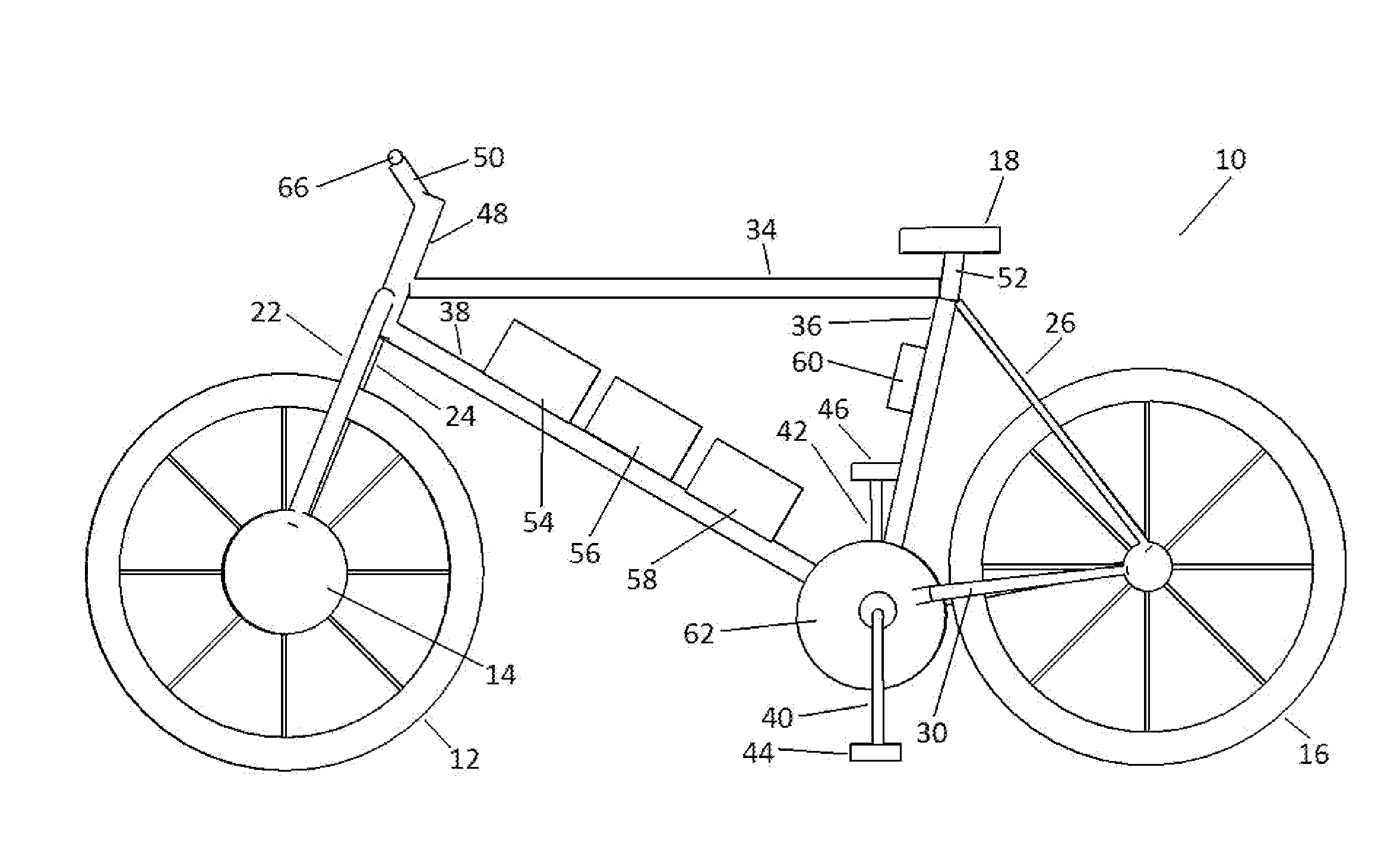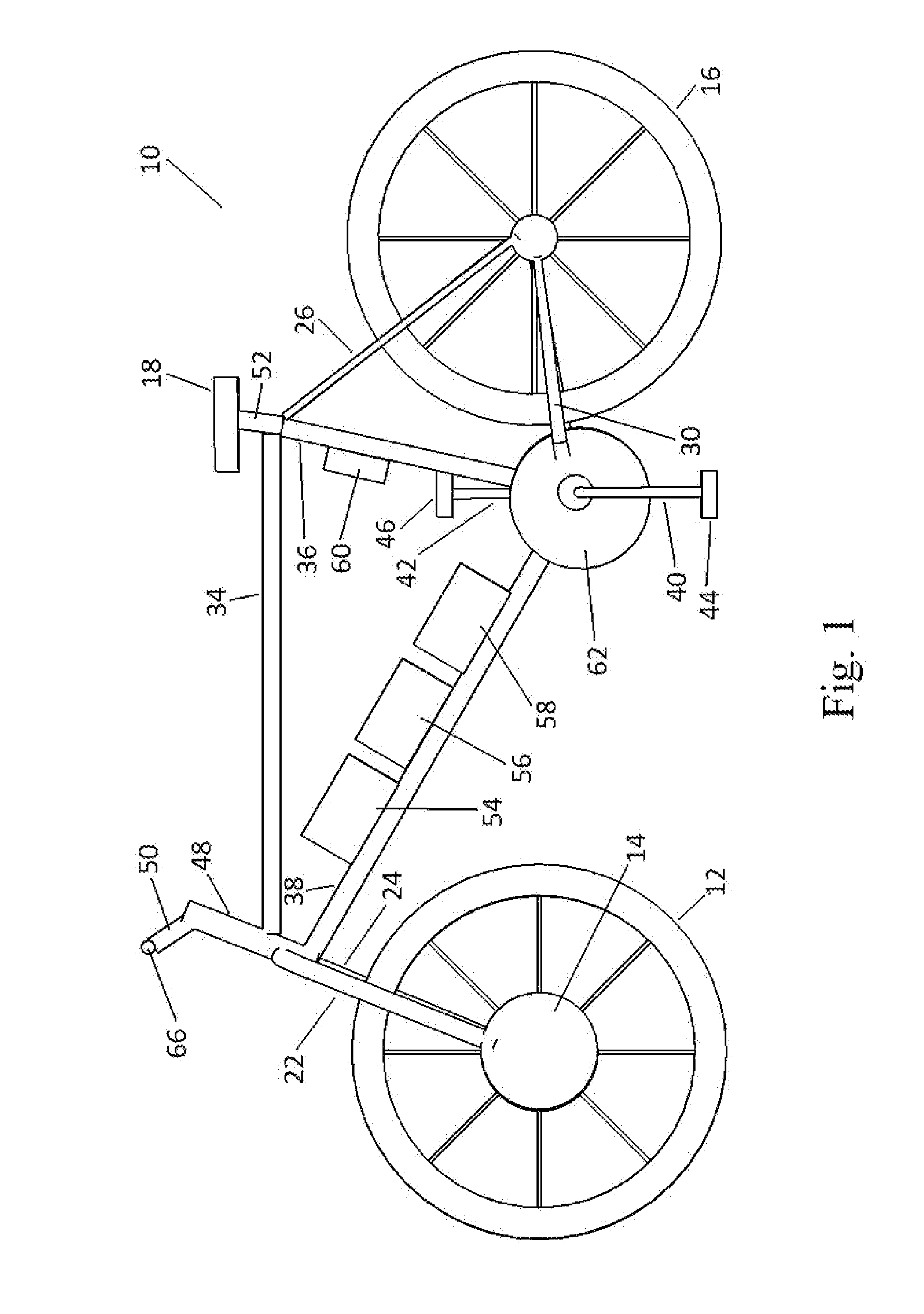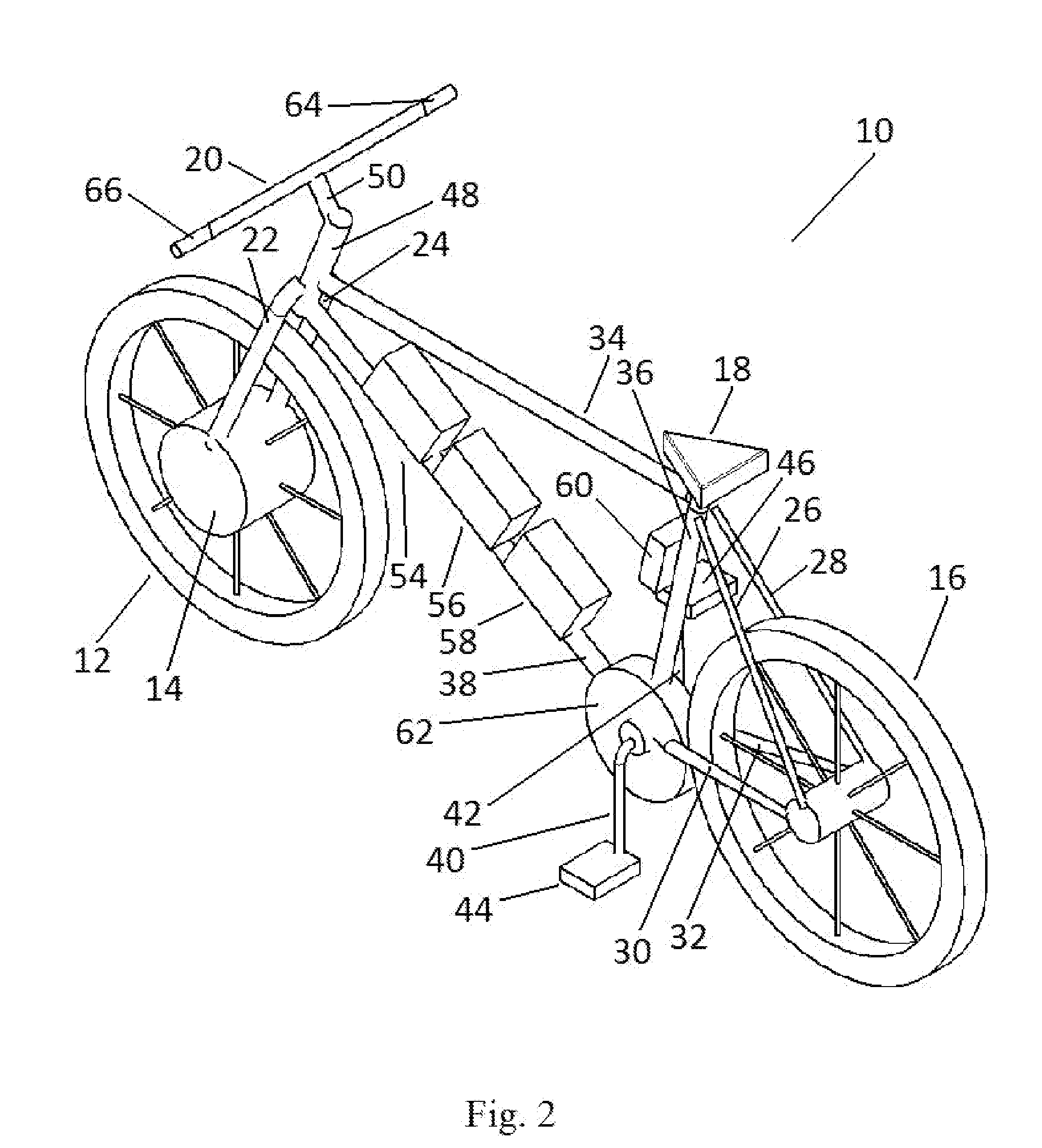Pedal generator electric bicycle
a pedal generator and electric bicycle technology, applied in the field of transportation, can solve the problem of not allowing the charging of the battery
- Summary
- Abstract
- Description
- Claims
- Application Information
AI Technical Summary
Benefits of technology
Problems solved by technology
Method used
Image
Examples
Embodiment Construction
[0015]While the detailed description herein discloses a bicycle embodiment, the elements of the bicycle embodiment are relevant to other cycle embodiments disclosed further below. FIG. 1 and FIG. 2 illustrate a bicycle 10 having a front wheel 12 with a hub motor 14, a rear wheel 16, a seat 18, a set of handlebars 20, front wheel frame supports 22 and 24, rear wheel frame supports to a main triangular frame 26 and 28, a rear wheel frame that supports the pedal assembly 30 and 32, and a main triangular frame comprised of a top bar 34, a rear bar 36, and a front bar 38. The pedal assembly is comprised of pedal bars 40 and 42 and pedals 44 and 46. The front main bar 48 connects the front wheel frame supports, the main triangular frame, and the extension bar 50 to the handlebars 20. The rear top bar 52 connects the seat 18 to the main triangular frame. In addition to these common components of an electric bicycle, there are one or more (an exemplary value of three batteries 54, 56, and 5...
PUM
 Login to View More
Login to View More Abstract
Description
Claims
Application Information
 Login to View More
Login to View More - R&D
- Intellectual Property
- Life Sciences
- Materials
- Tech Scout
- Unparalleled Data Quality
- Higher Quality Content
- 60% Fewer Hallucinations
Browse by: Latest US Patents, China's latest patents, Technical Efficacy Thesaurus, Application Domain, Technology Topic, Popular Technical Reports.
© 2025 PatSnap. All rights reserved.Legal|Privacy policy|Modern Slavery Act Transparency Statement|Sitemap|About US| Contact US: help@patsnap.com



